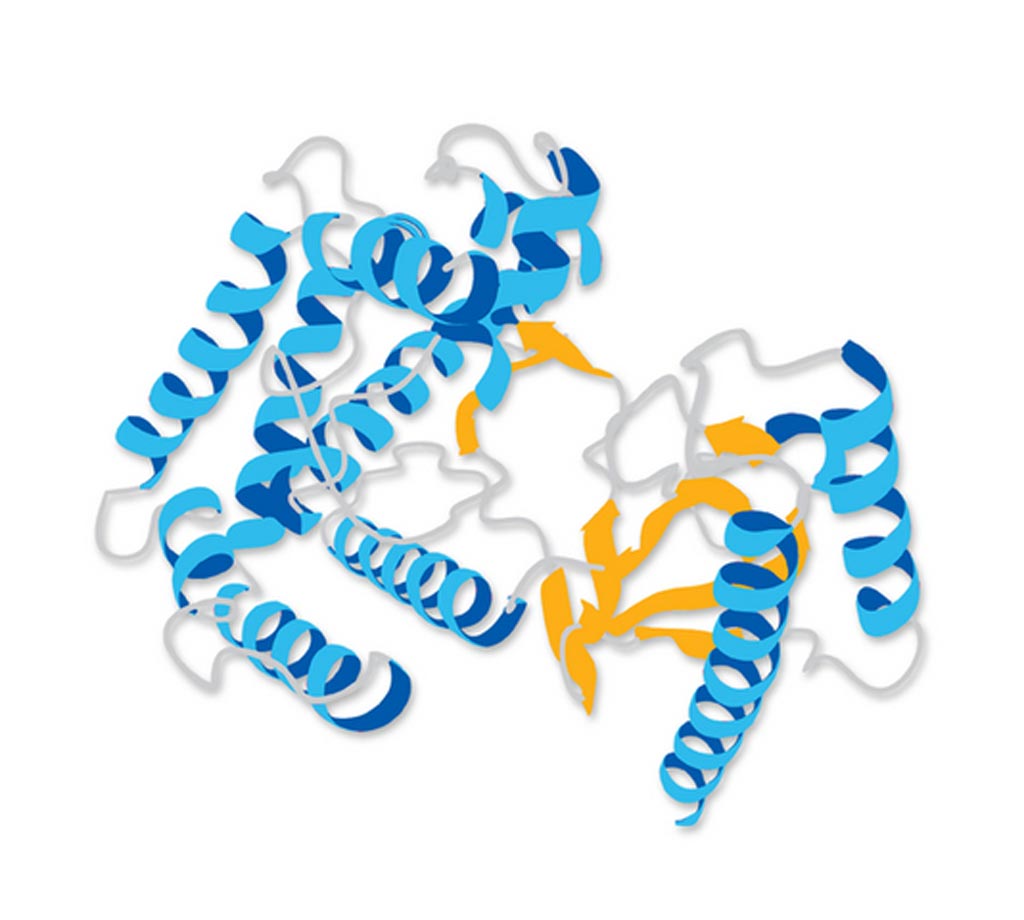Protein Combination Reduces Muscle Damage in ALS Model
By LabMedica International staff writers
Posted on 26 Jul 2018
Researchers have found that high levels of the enzyme mitofusion 2 (Mfn2) prevent nerve degeneration, muscle atrophy, and paralysis in a mouse model of the muscle wasting disease amyloid lateral sclerosis (ALS).Posted on 26 Jul 2018
Mitofusin-2 is a mitochondrial membrane protein that participates in mitochondrial fusion and contributes to the maintenance and operation of the mitochondrial network. Mitochondria function as a dynamic network constantly undergoing fusion and fission. The balance between fusion and fission is important in maintaining the integrity of the mitochondria and facilitates the mixing of the membranes and the exchange of DNA between mitochondria.

Image: A model of human calpastatin (Photo courtesy of Sigma-Aldrich).
In addition to its mitochondrial role, investigators at the Case Western Reserve University School of Medicine (Cleveland, OH, USA) reported in the July 12, 2018, online edition of the journal Cell Metabolism that Mfn2 acted as a dominant suppressor of neuromuscular synaptic loss, which preserved the health of skeletal muscles. By preserving neuromuscular synapses, increasing levels of neuronal Mfn2 prevented skeletal muscle wasting in both the ALS mouse model SOD1G93A and in aged normal mice, whereas deletion of neuronal Mfn2 produced neuromuscular synaptic dysfunction and skeletal muscle atrophy. Neuromuscular synaptic loss after sciatic nerve transection could also be alleviated by Mfn2.
Mfn2 was found to coexist with calpastatin, a protein involved in numerous membrane fusion events, such as neural vesicle exocytosis and platelet and red-cell aggregation. This association was found primarily in mitochondria-associated membranes (MAMs) where Mfn2 regulated the axonal transport of calpastatin. Furthermore, genetic inactivation of calpastatin abolished Mfn2-mediated protection of neuromuscular synapses.
Senior author Dr. Xinglong Wang, associate professor of pathology at Case Western Reserve University School of Medicine, said, “Upregulation of Mfn2 specifically in nerve cells is sufficient to abolish skeletal muscle loss in ALS and aged mice, despite ALS-causing protein being found in all organs and tissues. Mfn2 deficiency or mutations are commonly observed in patients with ALS, peripheral neuropathy, Alzheimer’s disease, and other neurodegenerative diseases in which synaptic loss has long been recognized as a prominent early feature. Supplementing Mfn2 may be a common and effective therapeutic approach to treat a wide range of diseases including but not limited to muscular disorders, patients with nerve injury, and various major neurodegenerative diseases associated with synaptic loss.”
Related Links:
Case Western Reserve University School of Medicine













